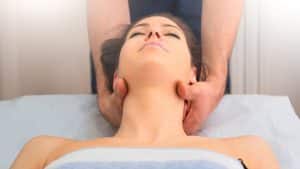Over the years, massaging has become extremely popular and as a result, you no longer have to seek out a luxury spa to feel the benefit as they are dotted around in numerous locations. Airports, hospitals, clinics, gyms, and more, all play host to a number of different massage treatments. So, let’s look into the basics – what is massage, and more.
What Is Massage?
The term ‘massage’ applies to any treatment that involves some form of pressing and maneuvering your skin as well as your muscles, ligaments and tendons. It can be important to know the differences between types of massage as they can vary greatly.
Sports Massage – Here, you will experience different kneading techniques and you will feel circular movements by the professional. This type particularly targets those who play sports in an attempt to prevent or treat injuries.
Deep Massage – As the name suggests, this massage looks to target deep in the muscle tissue. Movements will be slow but forceful to help any kind of damage to the muscle.
Swedish Massage – This is often seen as the other end of the scale to a ‘deep’ massage as movements are a lot softer. This is the most common choice for those without injury that just want to relax.
Trigger Point Massage – Here, you will really benefit if you have tight muscles due to injury or maybe just frequent overuse; the massage targets the tight areas of the muscle (fibers).
Why Should I Get A Massage?
So with that in mind, why should you get a massage? Although they have mainly been a luxury treatment in the past, the fact that they can now be found in multiple locations has made them highly accessible. Furthermore, a number of medical conditions now advise massage alongside the common treatment. Although the positive effects of massage are yet to be fully determined, they are said to relieve anxiety, reduce stress and of course, remove any tension in the muscles.
Many studies have been conducted in an effort to find what else massages can do for the body and the following medical conditions have been targeted by these studies; insomnia, digestive disorders, headaches, fibromyalgia, and more.
Although we cannot know for sure whether these conditions can be helped by massage just yet, the main reason to receive a massage remains as a source care and comfort. For this reason, it should never take place of trusted, well-studied medical care.
Are There Any Massage Risks?
Before going to get a massage, you should discuss whether it is a good option with your doctor as they know you best and will be able to advise you sensibly. Massages can work wonders as seen in the previous section but they are not advised to all; for example, you should avoid massages if you have deep vein thrombosis. In addition to this, any fractures, bleeding disorders, and osteoporosis, should also be considered before hopping onto the treatment table.
If you have received a massage, the important thing to remember is to listen to your body. There may be a certain ache the day after treatment but you should never feel pain or discomfort. This also applies during the treatment as well; if you feel pain during the massage, speak up. It could be that your skin is being manipulated too much or it could be a sign of a deeper problem.
What Happens During a Massage?
Before anything begins, you will talk with the therapist about any medication, your medical history, and ultimately, what you want to achieve with your session. Then, it will be explained exactly what techniques will be involved before you lie face down on the table. It is important to notify the therapist if you have any allergies to ingredients that can be found in lotions or oils as this will be more than likely be used to reduce the amount of friction.
A massage session is all about your comfort so it is important to relax as soon as you can and trust the therapist. Sessions can generally last 30 minutes, an hour, or even 90 minutes, depending on how much time you have. As your comfort is the main concern, you are more than welcome to let the therapist know if they are pushing too hard. There may be times of small discomfort but this is likely to be a knot in the muscle.
How to Find a Massage Therapist?
The first port of call should be your doctor as they will know the qualified professionals in your local area. Certain licenses and certifications are required to practice by law in some areas so you should be sure to find one that has these; if you are not sure, feel free to ask. You may also want to ask for the therapist’s experience, how many sessions you require, as well as what the cost will be.
In summary Massage can be a great way to relax and treat yourself but it can also run deeper than that. It can also be a good way to look after your health whether it is for a specific condition or if you just want to relieve some stress. If you are unsure about seeing a massage therapist, why not learn how to do it at home with a friend or partner?





